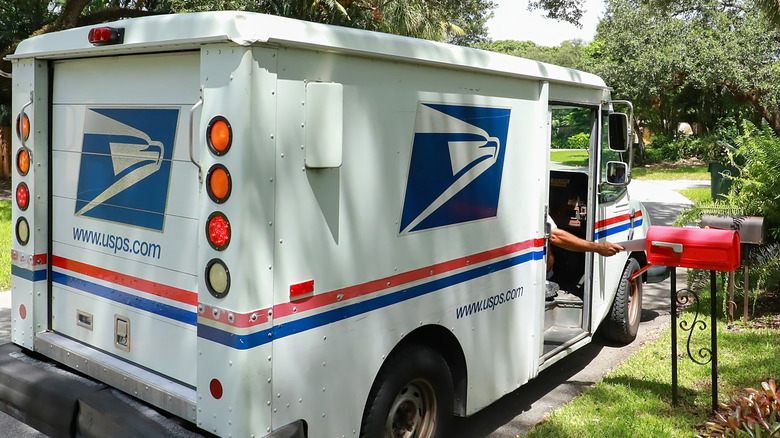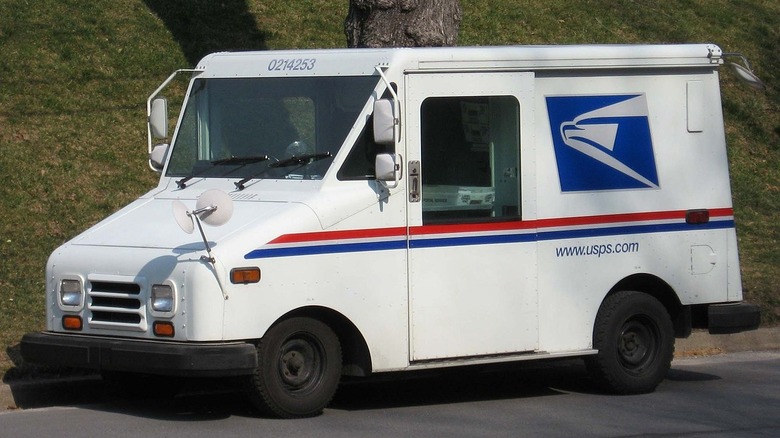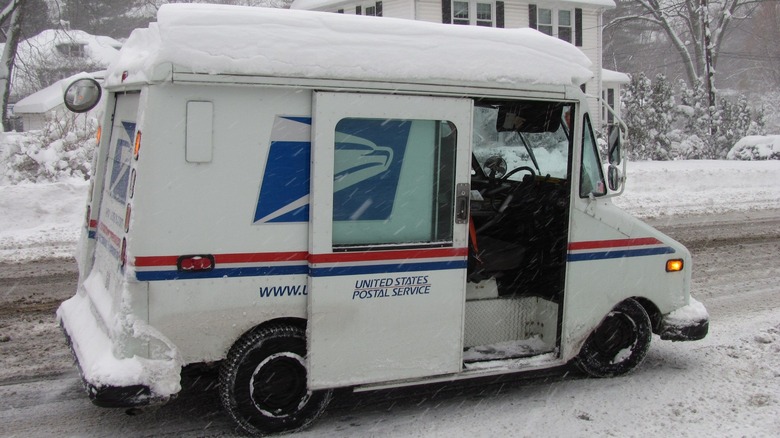This Classic USPS Vehicle Perfectly Embodies Its Name
Prior to the mid-1980s, U.S. Postal Service delivery vehicles consisted mainly of a fleet of DJ-5 Jeeps (a.k.a. "Dispatcher"), a lighter-duty two-wheel drive relative of the legendary off-roader — Jeep's CJ-5. To accommodate the needs of mail carriers, the DJ-5 did have a fully enclosed metal cabin with sliding doors, an automatic transmission, and right-hand drive for easily reaching mailboxes without leaving the vehicle's seat. Still, the antiquated Jeeps left much to be desired, and in 1986, postal officials decided to take a different approach toward a replacement carrier vehicle.
Rather than choose from an existing lineup of vehicles, a list of characteristics was developed that would define the ideal postal transport. With that in mind, commercial vehicle manufacturers were invited to develop prototypes to compete for the lucrative production contract.
The three finalists were American Motors (parent company of Jeep at the time), a joint venture called Poveco, and another joint venture between General Motors and Grumman. Yes, that's the same Grumman famous for manufacturing fighter jets such as the F4F Wildcat and F-14 Tomcat. Apparently, with the Cold War winding down, the company was hungry for additional revenue streams.
To make sure that the vehicles could last more than 20 years on the road under constant use in frequently harsh conditions, a grueling gauntlet of trials were undertaken: these challenges included driving over man-made potholes 35,000 times, hauling a one-ton load, and a thousand of miles worth of frequent stopping and starting to mimic real-world delivery conditions.
It was very basic, but durable
At the conclusion of the torture test, the vehicle from the joint venture of General Motors and Grumman — called the Long Life Vehicle, or LLV — was crowned the winner. An initial order for 99,150 of the Long Life Vehicles was placed, at a price of $11,651 per unit.
For its part, GM provided the chassis, which was based on the first-generation S-10 compact pickup truck, as well as a four-cylinder engine — initially, the same "Iron Duke" as the Pontiac Fiero — mated to a three-speed automatic transmission. Most of the heavy lifting was done by Grumman, which provided the coachwork and built the LLVs at its factory in Pennsylvania.
As the first production LLV started to hit the streets in 1987, a few shortcomings were immediately apparent. Since the LLV's boxy cargo area was windowless, poor visibility for the driver was a concern, as was the vehicle's low ride height, which was prone to getting stuck in heavy snow and required tire chains in those conditions. During hot weather, mail carriers had to make do with a simple dashboard-mounted fan because the LLVs lacked air conditioning.
Still, the LLV was an enormous success overall. With the final units rolling off the assembly line in 1994, that makes even the most recent examples a whopping 30 years old, and they're still transporting our online purchases, greeting cards, and unfortunately, bills to pay.
[Featured image by IFCAR via Wikimedia Commons | Cropped and scaled | Public Domain]
The next generation trucks will be mostly electric
At times, it seems like the LLV might be capable of running forever, but they are indeed reaching the end of their useful lives. In late-2022, the U.S. Postal Service announced a plan to completely revamp its fleet with at least 60,000 Next Generation Delivery Vehicles (NGDVs) by the year 2028. Like the outgoing LLV, the NGDV will be built specifically for mail delivery duties and 75% of the new fleet is expected to be all-electric (battery electric vehicles, or BEVs).
To supplement the specialty delivery vehicles, an additional quantity of 21,000 "off the shelf" commercial BEVs will be required, including an already-announced 9,250 Ford E-Transit EVs. While there's no doubt that a fleet mainly consisting of zero-emissions vehicles will be more friendly to the planet than the Long Life Vehicles being replaced, it remains to be seen if they'll be as reliable. When your mail truck is designed by a jet manufacturer, it sets the bar pretty high.
[Featured image by John Phelan via Wikimedia Commons | Cropped and scaled | CC BY 3.0]


